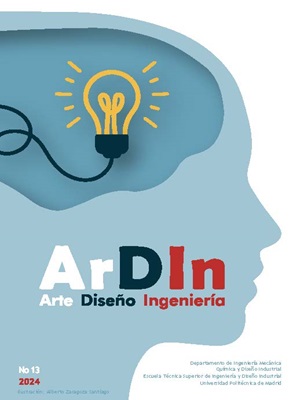Diseño de joyas de oro y plata en la dinastía Ming (1368-1644) = Design of gold and silver jewelry in the Ming Dynasty (1368-1644)
DOI:
https://doi.org/10.20868/ardin.2024.13.5214Keywords:
Dinastía Ming, joyas de oro y plata, patrones decorativos, tecnología, Ming Dynasty, gold and silver jewelry, decorative patterns, technologyAbstract
El historiador Yang, Z. (2008) menciona que la dinastía Ming fue una era en la que floreció el comercio, especialmente en el área de Jiangnan. En China, desde la dinastía Song, el área de Jiangnan se ha convertido en el lugar principal para la producción de las joyas de oro y plata. Bajo la influencia del gusto estético de los artistas joyeros y burócratas, las joyas de oro y plata de la dinastía Song se caracterizan por su elegancia, y los temas se toman en su mayoría de la vida cotidiana. En la dinastía Ming, la artesanía de la joyería de oro y plata se desarrolló con mayor profusión y técnica, los diseños estaban realizados con finos hilos de oro y plata, poniendo en valor una exquisita elaboración que potenciaba su estética; las joyas con incrustaciones de perlas y piedras preciosas eran muy apreciadas por el enorme grado de lujo que ostentaban. Son muy singulares, en este periodo las joyas realizadas con la técnica denominada de martillo, éstas adquieren un nivel de refinamiento portentoso mostrando un gran nivel de belleza.
Abstract
Historian Yang, Z. (2008) mentions that the Ming Dynasty was an era in which trade flourished, especially in the Jiangnan area. In China, since the Song Dynasty, the Jiangnan area has become the main place to produce gold and silver jewelry. Under the influence of the aesthetic taste of jewelry artists and bureaucrats, the gold and silver jewelry of the Song Dynasty is characterized by elegance, and the themes are mostly taken from daily life. In the Ming dynasty, the craftsmanship of gold and silver jewelry was developed with greater profusion and technique, the designs were made with fine gold and silver threads, highlighting exquisite workmanship that enhanced their aesthetics; Jewelry inlaid with pearls and precious stones was highly valued for the enormous degree of luxury it boasted. They are unique, in this period the jewelry made with the so-called hammer technique, these acquire a marvelous level of refinement showing a great level of beauty.
Downloads
References
Instituto Hubei de reliquias culturales y arqueología. (2007). Tumba Del Rey Liangzhuang. Beijing: Editorial Reliquias Culturales.
Museo de Nanjing. (2008). Golden Jiangnan, Artefactos de Oro Antiguos de La Provincia de Jiangsu. Jiangsu: Editorial de Bellas Artes de Jiangsu.
Wang, X. (2019). Traducción de Shiyiji. Beijing: Compañía de Libros Zhonghua.
Wu, Y. (1937). Tianshuibingshanlu. Shanghai: Prensa Comercial.
Yang, Z. (2008). Antiguas Joyas Chinas de Oro y Plata (Vol. 2). Beijing: Editorial Del Palacio Imperial.
Yang, Z. (2011). Colores Lujosos (Vol. 2). Beijing: Editorial de La Compañía de Libros Zhonghua.
Zhang, T. (1996). Historia de La Dinastía Ming. Yufuzhi. Changsha: Editorial Yuelu.
Zhang, Y. (2018). Materias Primas y Técnicas de Producción de Artículos de Oro y Plata En La Dinastía Ming. Journal de Estudio de La Ciudad Prohibida, (19), 89.
Downloads
Published
Issue
Section
License
ArDIn does not charge authors for processing or publishing an article and provides immediate Open Access to its content. All content is available free to the user or their institution. Users are permitted to read, download, copy, distribute, print, search or link to the full text of articles, or use them for any other lawful purpose, without prior permission from the publisher or author. This is in accordance with the BOAI definition of open access.
- Authors retain the copyright and grant to the journal the right to a Creative Commons attribution / Non-Commercial / Non-Derivative 4.0 International (CC BY NC ND) License that allows others to share the work with an acknowledgement of authorship and non-commercial use.
- Authors may separately establish additional agreements for the non-exclusive distribution of the version of the work published in the journal (for example, placing it in an institutional repository or publishing it in a book).
Unless otherwise indicated, all contents of the electronic edition are distributed under a Creative Commons license.













